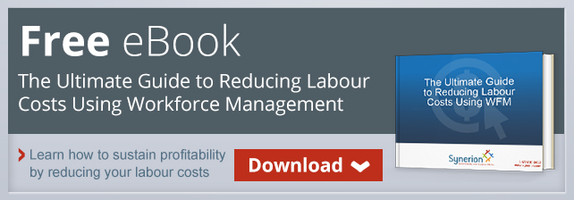 The benefits of staff meetings are vast, but keeping those meetings to a specified time while still being productive can be a challenge. If managers stick solely to the agenda, meaningful discussion may be squashed, but if employees are allowed to guide the meeting, the time allotted to discussion can easily bleed into the better part of the day. Use these tips to keep staff meetings productive, efficient and on-point.
The benefits of staff meetings are vast, but keeping those meetings to a specified time while still being productive can be a challenge. If managers stick solely to the agenda, meaningful discussion may be squashed, but if employees are allowed to guide the meeting, the time allotted to discussion can easily bleed into the better part of the day. Use these tips to keep staff meetings productive, efficient and on-point.
Save Conversation for Closing Thoughts
In the moment of a big announcement or decision, conversation can spiral out of control. In the same breath as a person is explaining their feelings on a topic, they are still formulating that opinion. This can result in carousel discussions and unnecessary disagreements which aren't productive or time efficient. To allow everyone to process new information and limit long discussions, schedule an open forum at the end of the meeting. Employees can bring up any previous points and talk about the merits of those plans after having time to formulate their thoughts.
Plan Ahead
The agenda shouldn't be a carelessly thrown together list of standing items that are brought up month after month. Each agenda should be customized and planned as per employee concerns and feedback. Spend time on the agenda each month, making sure to get to the crux of the month's issues, formulate what will be addressed and what time will be given for discussion, if necessary.
Schedule Lean
It's not often you hear about a meeting getting out early. Once the time is set, the topics and discussion will stretch or shrink to fit the meeting time. Make your meetings lean by scheduling the bare minimum amount of time to get through the material. Even if it occasionally runs later, by confining the meeting to a specified time, you can focus your meeting on the important points and reduce unnecessary sidebar conversations.
Get Creative
The stodgy sit down, all-hands meeting is not only a relic, but incredibly inefficient. Studies have found that meetings conducted while standing result in faster decisions that still retain their quality. Don't feel constrained to the conference room. Have team meetings in the middle of the workspace or, on a nice day, outside. Don't let everyone get relaxed and lazy, keep them moving to make your meeting more efficient.
Parse the Guest List
Too many chefs can spoil a meal and too many participants in a meeting can drastically decrease its efficiency and effectiveness. Keep staff meetings as small as possible not only to decrease time wasted, but also to get each member's feedback on the presented topics. If necessary, break staff meetings up into different shifts or hold two meetings. By keeping meetings small, employees can give their feedback and managers can ensure meetings are kept short and sweet.
Choose Wisely
It's tempting to use staff meetings as an informational time for corporate notes and safety memos but it may not be a good use of that time. Determine what information needs feedback and verbal teach-back conversation and save those pieces for staff meetings. Broader information such as company policy changes, are more effectively communicated through written processes like email because they require no discussion and employees may need access to that information in the future. Keep staff meeting time for process improvement and employee feedback issues.
Staff meetings can be both efficient and effective, the trick is just in the execution. For this month's staff meeting, use these six tips to keep the conversations on point.
